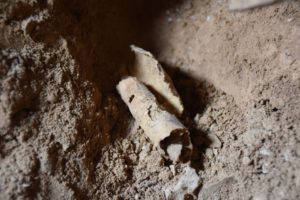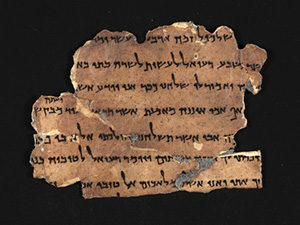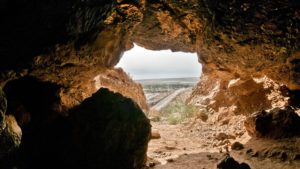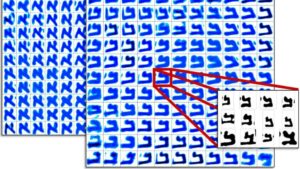Dead Sea Scrolls
The Dead Sea Scrolls are ancient Jewish and Hebrew religious manuscripts that were found in the Qumran Caves in the Judaean Desert, near Ein Feshkha on the northern shore of the Dead Sea in the West Bank, and the last discovered scrolls found in the Cave of Horror in Israel.
Researchers say Artificial Intelligence (AI) has for the first time shown that two scribes wrote part of the mysterious ancient Dead Sea Scrolls
- Tests were carried out on the longest text, known as the Great Isaiah Scroll.
- It was found that probably two unknown individuals had copied down the words using near-identical handwriting.
- The scrolls, which include the oldest known version of the Bible, have been a source of fascination since their discovery some 70 years ago.
- The first sets were found by a Bedouin in a cave at Qumran near the Dead Sea in what is now the Israeli-occupied West Bank.
- They contain manuscripts, mostly written in Hebrew as well as Aramaic and Greek, and are believed to date from about the Third Century BC.
The Dead Sea Scrolls include a guide to hidden treasure
One of the most intriguing manuscripts from Qumran is the Copper Scroll, a sort of ancient treasure map that lists dozens of gold and silver caches. While the other texts are written in ink on parchment or animal skins, this curious document features Hebrew and Greek letters chiseled onto metal sheets—perhaps, as some have theorized, to better withstand the passage of time. Using an unconventional vocabulary and odd spelling, the Copper Scroll describes 64 underground hiding places around Israel that purportedly contain riches stashed for safekeeping. None of these hoards have been recovered, possibly because the Romans pillaged Judaea during the first century A.D. According to various hypotheses, the treasure belonged to local Essenes, was spirited out of the Second Temple before its destruction or never existed to begin with.
From Egypt to Aleppo
At the end of the 14th century, the Aleppo Codex was brought from Egypt to Aleppo, Syria, and placed in the “Cave of Elijah” in the city’s ancient synagogue, in a metal chest sealed with a double lock, far from public view. The Jews of Aleppo saw the Codex as the most important manuscript in their possession – so much so, that judges were sworn in with it, and magical, protective powers were attributed to it. It was strictly forbidden to sell the Codex or even remove it from the synagogue, as written on the title page, “Sacred to the Lord. . . . It shall be neither sold nor redeemed. . . . Blessed be he who guards it, accursed be he who steals it . . . .” The members of the community believed that if this injunction were violated, they would be severely punished.

Besides the Aleppo Codex, the Jewish community of Aleppo owned three other important codices. One of them, known as the “Small Codex,” was probably written in Italy in 1341 by an Ashkenazi scribe. Its main part comprises the Pentateuch, with vocalization and cantillation marks and an Aramaic translation. Masoretic notes are inserted between the columns, and Rashi’s commentary appears in the upper and lower margins. The Small Codex also includes an additional text of the Pentateuch in tiny Hebrew letters – without the translation, vocalization, and cantillation marks – as well as the Song of Songs with Rashi’s commentary, the Five Scrolls, the sections from the Prophets read in the synagogue after the Torah reading (haftarot), and a commentary (midrash) on the Masorah. It is currently on display at the Shrine of the Book.



